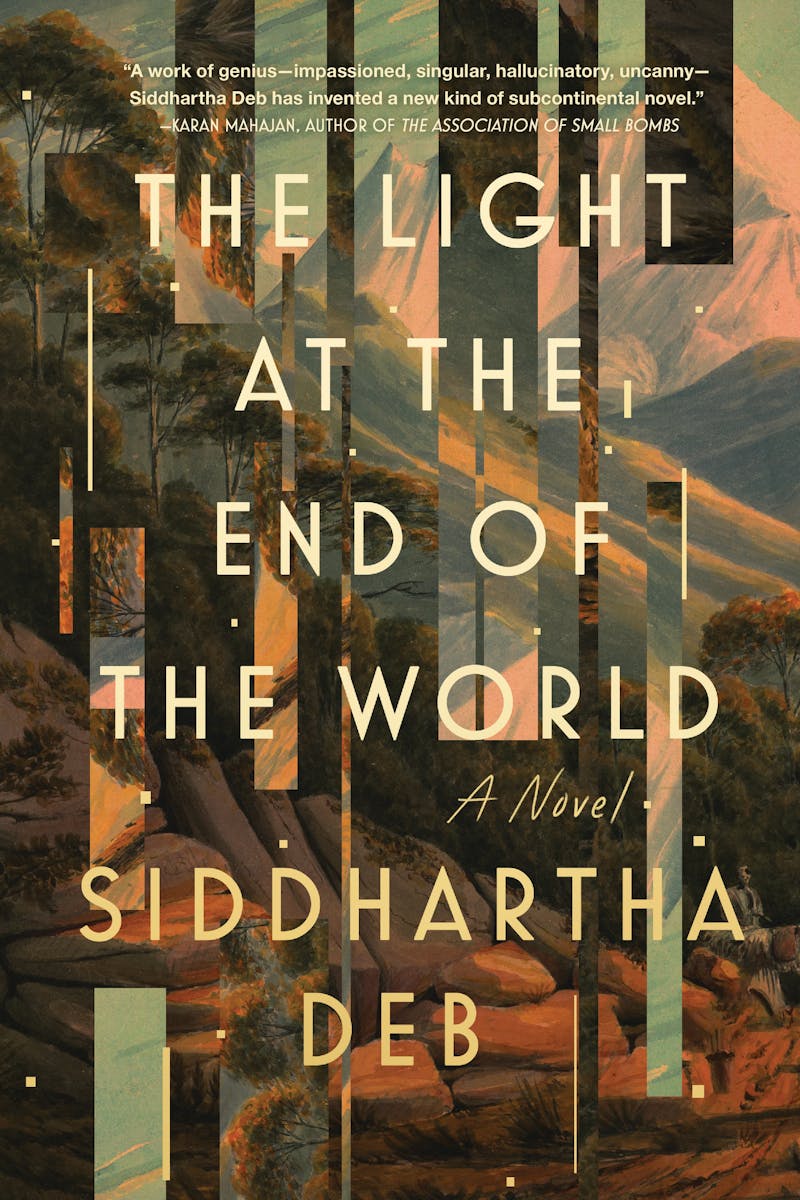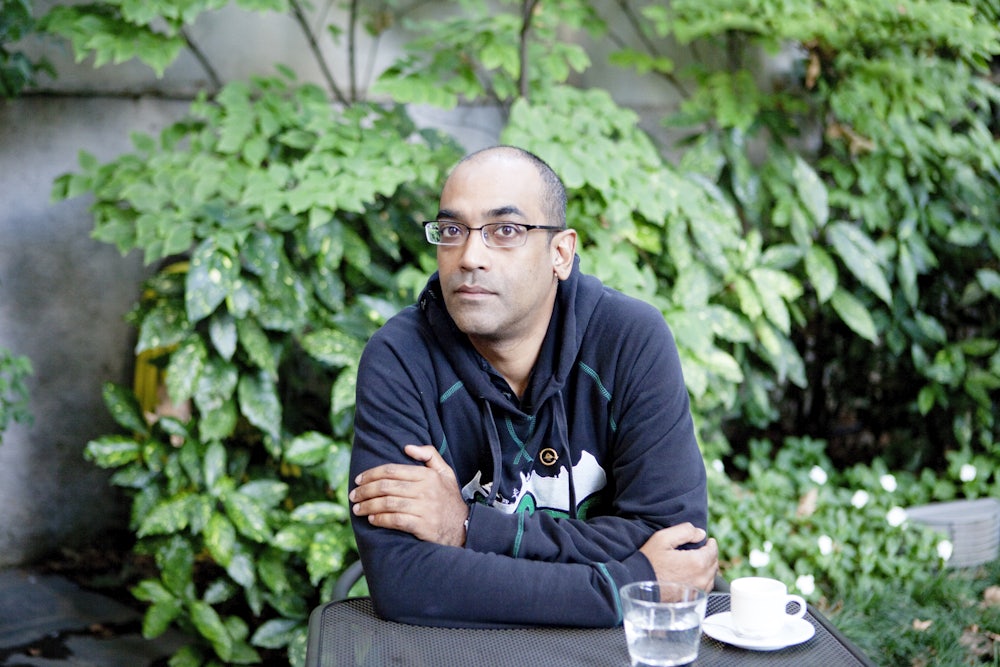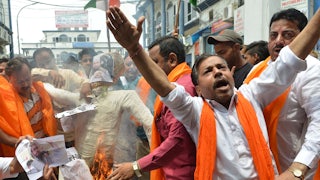Minutes after midnight on December 2, 1984, a heavy, colorless, putrid gas spread over the neighborhoods surrounding Union Carbide’s pesticide plant in Bhopal, India. Thousands died immediately, overtaken by coughing fits and choking to death. Tens of thousands more woke up weak of breath and frothing at the mouth, their eyes severely irritated. By some estimates, as many as 10,000 people died in the first few days after the disaster, frequently termed the “worst industrial accident in history,” and 15,000 to 20,000 more died prematurely over the next two decades. Even today, the site remains toxic, and Dow Chemical Company, which bought Union Carbide in 2001, has refused to clean up Bhopal or provide residents with clean water.
On the thirtieth anniversary of the disaster in 2014, Siddhartha Deb wrote about its aftermath and the Indian government’s failure to hold Union Carbide accountable. The Indian elite, he found, seemed “to feel that this business of talking about the dead and dying of Bhopal has gone on for far too long.” Industrialists wanted to make American corporations feel welcome in India; any reckoning with Bhopal, to them, was “holding back India’s inexorable progress.” He found among residents an accompanying distrust. What if the accident wasn’t an accident at all, they wondered. What if a sinister cabal was intent on poisoning—experimenting on, even—the people of Bhopal?

In his novel The Light at the End of the World, Deb explores a range of alternative explanations for and ramifications of historical events. There is Bibi, a worn-down journalist in what looks like present-day New Delhi. She investigates the disappearance of an old colleague after an unaccountable incident unsettles her dreary everyday life. There is an anonymous assassin in Bhopal in 1984, tasked with taking out a factory worker, who is about to blow the whistle on dangerous chemical operations at the local factory. There is Das, a student in 1947 in Calcutta. Das comes to believe that he has been anointed with the privilege of piloting a mystical Vedic airplane—if he can only weather an intense and mysterious training for it. And there is Sykes, a British soldier in 1859 on a mission to suppress ongoing rebellious activities following the Sepoy Rebellion. He soon discovers strange goings-on afoot at the palace where he is stationed.
Working in a speculative mode, Deb imagines a kind of agency for his characters barred to them by historical, and present, realities. In our conversation, which has been condensed and edited for clarity, we talked about the uses of science fiction, the role of mythmaking, and political possibility.
Jasmine Liu: The Light at the End of the World contains narratives that take place at four times in Indian history: the present, 1984, 1947, and 1859. What is the significance of these dates for you?
Siddhartha Deb: They all represent the end of the world for the people inside them: the shift into formal colonialism in the aftermath of the Sepoy Rebellion in 1857, the traumatic partition and the birth of India and Pakistan in 1947, the Bhopal Union Carbide disaster in 1984, and then this present-future of climate change, climate collapse, and authoritarianism.
Beyond that, I wanted to play with genres, with different characters, with different settings. I wanted to have fun telling a noir story in Claustropolis in 1984. I wanted to play with this vivid, occult psychoanalysis in 1947. I wanted to play with steampunk, the historical novel, and the Western in the “Line of Faith” section. The Bibi section is meant to be an alternative near future, not quite today’s India but a slightly near future, alternative India.
J.L.: Throughout the novel, you include lush descriptions of urban and natural landscapes. Readers spend a lot of time following Bibi through different neighborhoods in New Delhi, and Sykes on his travels north from Calcutta.
S.D.: For me, landscape is a way of really getting the character. One of the great limitations of today’s autofiction is it’s just so caught up with the interiority of these bourgeois selves. That is not something that interests me as much. I’m more interested in the back-and-forth interaction between the interior self and what is outside. What is outside is very rich to me; it can be threatening, like the air quality, but it’s interesting to me, it’s alive to me. The physical world is very important to me as a writer and a human being.
The setting of where Bibi lives is very important to me. She lives in Munirka village, where I lived for many years, and she works in Connaught Place, where I worked for many years. There’s an aspect of memory that I use. But then I also go back to research. I would write the Bibi sections, and then I would actually go to Delhi and then walk around to get a sense of the details. Delhi’s a very hard place to walk in. It’s not like New York. It’s very unfriendly to pedestrians. And then Bibi’s a woman—it’s especially hostile to women. I would actually walk around and get a sense of the sidewalks, and see the juxtaposition of a slum next to a mall. For me, that detailing is important.
J.L.: Important historical events, such as the Indian Rebellion of 1857 and the Bhopal gas tragedy, are the backdrop to plotlines in the novel. How did you approach research in your writing process?
S.D.: Research was important to this novel, but it came later. I went to a Ph.D. program at Columbia. I didn’t finish it, but I had a minor in the 1857 rebellion. A lot of reading I had done as a graduate student percolated through the book. I have also done reporting in Bhopal on the 30th anniversary of the disaster. I had a lot of the documentation, the data, the facts, but they had been sitting with me for nearly a decade, burning inside me—this thing which everybody has forgotten about.
Once I started writing the book, I wanted to make sure I had some facts right. Did the British have a telescope in 1859? If so, what kind of telescope did they have? Then I would go around, whether it was for the contemporary future section or Bhopal, and do standard novelistic research. If I was to get money from a moneylender, who is not part of the regular banking circuit, what would the moneylender’s office look like? I have journalist friends who said, we’ll take you to one, and we’ll tell you what you need to know about, how would you carry a lot of cash if it’s not in a briefcase? And the moneylender said, you carry it in this thing that you call a bandi. The story led the research, not the other way around, because I wasn’t interested in writing a historical novel.
J.L.: I wonder, for instance, with Bhopal, what you felt couldn’t be explored journalistically but had to be explored novelistically?
S.D.: There were these two counterforces. For the Indian elite, it’s like, why do you want to dig up the past? This is not important, we have embraced the new economy, we are a great power, who gives a shit about Bhopal? Only outsiders like you. That’s the elite section. And then there were the poor, the people who had been affected, who were still suffering. They had conspiracy stories. They said, this wasn’t an accident, this was deliberate, this was an experiment. At first, I wrote about it journalistically, in nonfiction, very matter-of-fact. And then for many, many years, it stayed with me, a wound I couldn’t get rid of. What if we were to take both these things—the desire to forget on the part of the elite, the conspiracy on the part of the subaltern, the poor—and just begin writing? What if it was an experiment of some kind? Why not? It’s fiction—I couldn’t do that in nonfiction.
J.L.: The four protagonists each undergo transformations that cause them to question their loyalties—and in some cases, develop new, more critical, political consciousnesses. How did you think about the task of representing awakenings?
S.D.: One of the keys to it for me is that my novel really steps away from realism. It starts with very realistic moments in the subcontinent: the end of the world, which has been dealt with really brilliantly by a lot of great realist fiction—novels, plays and films—in India, Pakistan, Bangladesh, but I veer away from the realism. That’s where the politics lies—in the uncanny. I’m not entirely happy this is what I did, but this is what I felt I had to do.
Really, the novel is about being trapped in our present-day world where, no matter how much people put into movements, the resistance is often at danger of being co-opted or petering out. The novel is about these characters who recognize that they are not who they thought they were, in terms of their roles as an assassin, as a woman, as a man. The boundaries between the human and the nonhuman are one of the places in which their political awakening takes place. That’s kind of an uncanny thing.
I wasn’t in New York when the air quality thing happened, but I imagine it felt very unreal. All my friends were sending me photos and videos and kept saying, it’s like a film, it’s like a dream, it’s like art—it’s not realism, in other words. For me, that awakening of the characters is just an awareness of a dissolving of their boundaries, if that doesn’t sound too strange.
J.L.: I wonder why you said you’re not sure if you’re entirely happy with the uncanny.
S.D.: I mean, I’m happy as a writer, as a novelist. I’m not happy as a citizen. As political subjects, we all need political solutions to these problems.
I think one of the things that has happened in India and the United States—and not just these two places, but these are the two places I know best—is that the right wing has seized on myth and fantasy, while the political opposition, liberals and to some extent even the left, are all about facts and reason. I object to that. As somebody very much on the left, I don’t see why myth, history, fantasy, should be surrendered to the right wing and their twisted version of it. In that sense, my book is a riposte to that kind of right-wing mythmaking. For example, Vedic aircraft are very much a right-wing meme in India, but my use of it is not right-wing at all in the novel.
J.L.: Each of these narratives seems to start with realism. At a certain stage, they’re overtaken by these drug-induced states, or these uncanny events. How did you make that move?
S.D.: I’ve written in a realist vein in the past and I was a little bored with it. I’ve wanted to read a South Asian novel that was more speculative, and there weren’t any in English. That’s where I found in American writing a richness: Pynchon, DeLillo, Rachel Kushner, N.K. Jemisin. I see the South Asian reality as very twisted, as very warped. It was a completely new kind of fictional venture for me, and it was difficult, but it was fun.
The bad part of it is that a lot of publishers, agents, and my older writer friends didn’t like it because it’s too different. I think there’s a very narrow understanding of what a South Asian is allowed to do in terms of fiction. I really wanted to challenge that. Just because I’m Indian doesn’t mean I can’t play with fantasy, or conspiracy, or psychoanalysis.






